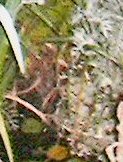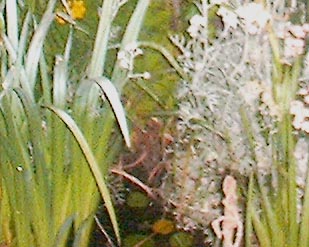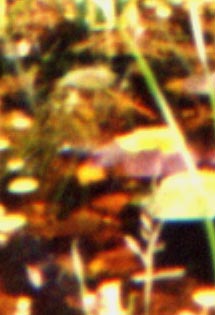

THE STORY BEGINS

Greenjackdavey and his wife are a pair of middle aged artists that live
by the coast, in South West England.
In America they would probably be described as "outsider" artists.
They produced a remarkable diverse range of art between them and the line
between "Art" and "Craft" can become quite blurred.
I must explain that I myself
am a Art Dealer specializing in Folk and Rural Art. I first heard of Greenjackdavey
( the name "Greenjack" by way, is reference to his part in leading
an old pagan dragon procession through the streets of the town), when
a client asked if I could get her one of his almost iconic style paintings.
It was refreshing to meet people with old countryways and after refusing
money,
the deal was struck for Garden supplies from a nearby Garden Centre, delivered
by me in my car. (Neither of them drive,"never felt the need".)
It was only afterwards I found out how lucky I was to get one of his paintings. Everything they do readily finds a home among a host of collectors.
It was during my following visits to try and obtain more works,( in vain!) that the story of the fairies unfolded. They had already posted the pictures on a Geocities home website and got an incredible response in emails. Apart from a few of doubtful sanity, there were dozens from genuine people with similiar experiences. Added to this was questions from Scientists and Professors around the world.
There is obvisiously something going on here and a much wider belief than would have been supposed in this fast moving technological age.
HISTORY OF THE GARDEN

We do not know how long the land belonged to the local Lord, but it was not until the middle of the 19th century that the tract was first built on. It was on the demise of the current Lord of that time, that the estate passed to his four sons. The Littles Wood and its surrounding field had always been regarded as special by the locals from time immemorial. The word "Littles" being a local generic term used to describe all sorts of strange supernatural beings. It was believed bad luck to refer to them as fairies out loud (or "Varies" as it is pronounced in this dialect) and all sorts of euphemisms were employed, Littles, Little People, Little Folk, Good Neighbours. No one ever tried farming in shadow of the old wood and successive Lords had not even used it for grazing. Nobody local would ever dream of building there.
The coastal town was growing and soon the Railway would be coming. There was already a shortage of desirable houses and land was fetching good prices. The Lord`s sons sold the field to a builder who was oblivious or did n`t believe in these old superstitions, much to the dismay of the locals. The Son`s themselves, were not completely unaffected by local belief and as a compromise or out of their own superstitious fear, they took the precaution of adding clauses to the sale agreement. It was stated that the wood itself should never be touched and that there should always be a six foot boundary wall between the grounds of the houses and the trees.
The builder had envisioned a grand scheme of building 18 houses on the field with an access road. Unfortunately the building works was dogged with trouble, and he only succeeded in completing two of the large double semidetached "Littlefield Villas" before his business folded. He never really recovered, and when he passed by, the villagers would nod to each other with knowing looks that used to infuriate him. Another builder took over and the street was completed with more modest artisans cottages, in the form of a long terrace.
Ill fortune also dogged the Lord's sons that sold the land, and although not cursed, it was more that their lack of good luck became apparent. They all learnt not to gamble or take risks. Only one tried to make amends by renovating family lands and gardens. They all came to believe that their ill luck was brought on them for betraying some ancient unknown covenant that had been agreed between their ancestors and the inhabitants of the Littlefield wood. Their ill fortune did not pass to the next generation and similarly the new builder went on to make a success of his life.
In the 1980`s the local council issued a compulsory order on the edge of the far side of the wood and laid an access road to a new town roundabout. In these more enlightened times it would no doubt be wrong to accredit the constant unexplained stalling and breakdown of vehicles, with the numerous ensuing traffic jams to the mischievous denizens of the remaining wood
Writing on the Wall

It was during recent renovations to hall passage of the house, that a strange message came to light. Under numerous layers of old wall paper, scrawled on the original plasterwork, a child's drawing in crayon was uncovered. From the wallpaper immediately next to it, it must be surmised that this tableau was inscribed sometime around the turn of the last century (c.1900).
The paper was stripped from the wall to reveal, drawn in a childish hand, firstly a man on a horse, then a rendering of the house. Next behind the house was a group of children / small people dancing in circle holding hands beneath a crudely drawn tree with a head or face in it. As the last piece of paper was removed, it revealed in neat handwriting, in printed letters 4" inches high, the message
Beware
Fairies.
